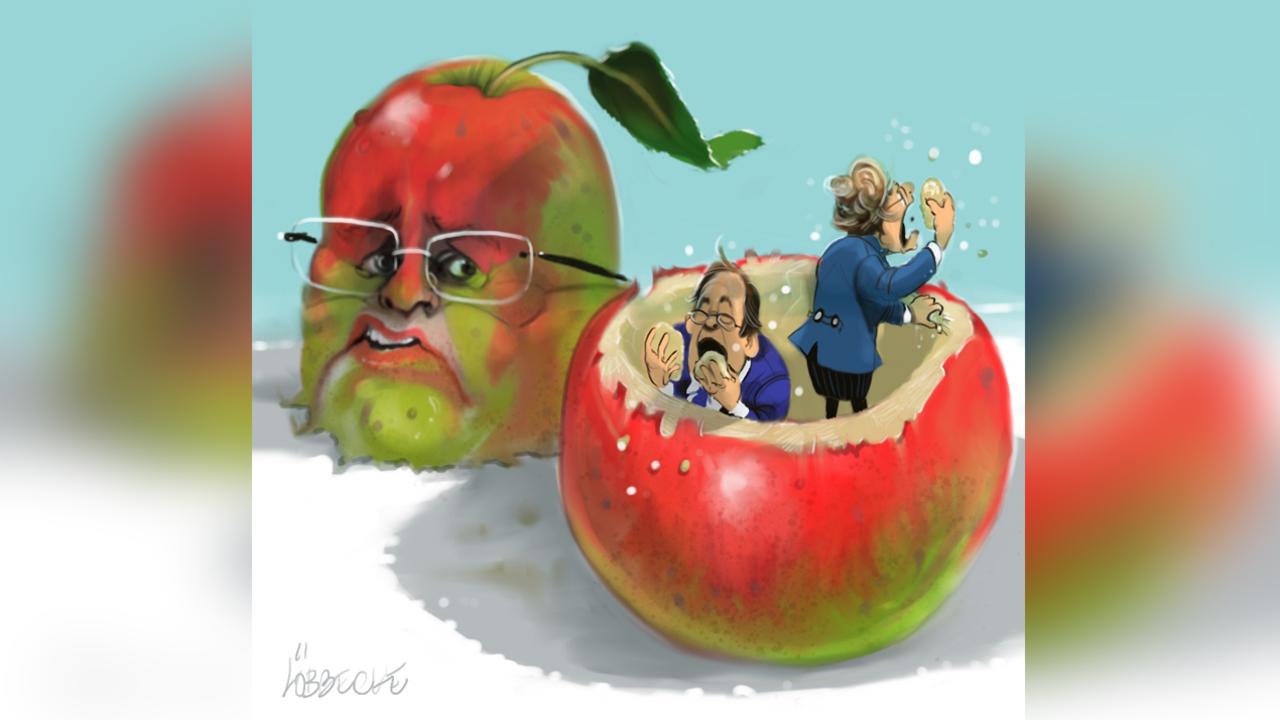IN 1992, a new Broadcasting Services Act was introduced with the goal of dramatically simplifying media regulation. Two decades and 70 amendments later, the original 100 pages have grown to nearly 1000. The result is a quagmire that is as unsustainable as it is inefficient.
It is unsustainable because its byzantine apparatus of privileges and obligations makes little sense in a digital age. With two-thirds of the population already having broadband access, the distinction between broadcasting and other forms of internet content is blurring and will ultimately disappear. And with it will disappear the relevance of national borders to the programs Australians view. Yet the legislation is built on the notion of "Australian broadcasting" as a discrete entity, which can be licensed and regulated under national law.
Nowhere are the problems more acute than in the Australian content obligations imposed on commercial broadcasters. These obligations have a long, unhappy history. When television was introduced in 1956, commercial broadcasters were required to employ "Australians, as far as is possible, in the production and presentation of programs".
This was soon judged insufficient and then prime minister Robert Menzies imposed stiffer obligations in 1961. A campaign by the "TV: Make it Australian" coalition of actors and producers, supported by the ACTU and the ALP, led to regulatory creep, culminating in Gough Whitlam's introduction of a points system, under which broadcasters had to meet targets of both programming hours and expenditure.
That framework remains in place, but further regulatory creep has seen its coverage expand, as has the number of specific sub-quotas defined by genre.
Yet the justification for all this remains unclear. At the outset, governments relied on the findings of a 1963 Senate select committee that worried about the "undesirable sociological consequences" of foreign programming, a not-so-subtle reference to images of gyrating hips and Acapulco beach parties the committee found revolting. In the Whitlam era, moralism was replaced by crude cultural nationalism, with more than a soupcon of anti-Americanism. And now the refrain is that foreign programs threaten our cultural legacy.
But the notion that Australian culture is a fragile blossom that can only flower sheltered from the stiff winds of competition is hardly compelling.
Even less compelling is the notion that the current obligations actually promote Australian culture. Quite how requiring local production of virtually all ads invigorates our heritage is a mystery. And so is the alleged link between the magic of Henry Lawson and Patrick White on the one hand, and the endless repetition of third-rate game shows and mindless reality TV programs on the other.
Indeed, far from advancing our culture, the regulations, by shutting out imported content, encourage broadcasters to produce inferior "look-alikes" to foreign shows they know audiences would prefer, instead of competing through programs that are original and genuinely Australian. And in the process they encourage local artists to become pale imitations of foreign ones, rather than rewarding cultural distinctiveness. But pointlessness has never prevented protectionism from having beneficiaries. The media alliance's claims notwithstanding, struggling thespians are not among them. After all, the supply of wannabe starlets is unbounded, so regardless of "buy Australian" obligations, competition between them reduces their earnings to what they could get in other walks of life, be it as pole dancers, clairvoyants or neighbourhood dope peddlers. Not so, however, for those who have made it to stardom, as their competition would come from overseas. By restricting that competition, the quotas allow them to charge more, feeding the market for snazzy cars and luxury hideaways. And the narrow sub-quotas ensure none of our plucky A-listers miss out, as the requirements must be met in each of a bewildering array of genres. Little wonder prominent actors, producers and advertising executives have been such staunch defenders of broadcasting xenophobia.
When challenged, the beneficiaries claim the restrictions impose little harm. They point to the fact broadcasters typically exceed their quotas as evidence the obligations don't force broadcasters to do more than they otherwise would. That this claim is inconsistent with the fragile blossom theory clearly doesn't trouble them. But it is nonsense in any event. For meeting the quotas involves substantial fixed costs, for example for production infrastructure. Those costs, which otherwise would not be incurred, are covered by the mandatory purchases the quotas impose, allowing producers to then compete at variable cost for the rest of the Australian market.
So the resulting inefficiencies are high: because we needlessly duplicate fixed costs, exactly as in other protected industries; and because we reduce product variety, while promoting knock-offs rather than originality.
That diminishes the value consumers derive from broadcasting, which should hurt the commercial broadcasters. In reality, however, they have gotten a free ride, as the pain has been more than offset by favours extracted from successive governments. These include privileged access to sports programming through the anti-siphoning rules, and licence fees that do not capture the profits earned from the free use of spectrum and from our especially tight restrictions on the number of competing channels. To make matters even better, in the run-up to the last election, Communications Minister Stephen Conroy slashed those license fees, supposedly to protect local content obligations. That no measures were ever put in place to ensure the windfalls were actually used for local content presumably made the channels owners even more grateful.
However, all this chicanery is doomed as the internet makes foreign broadcasts immediately available to local audiences. With Conroy's convergence review, which is examining these obligations, set to report early next year, the question is what should be done.
The review's issues paper assumes that promoting local content is good policy. But despite the review receiving masses of evidence, no cogent arguments have been put in its favour, and any regulation entirely unsupported by analysis should not be allowed to persist. The best approach would therefore be to simply abolish the current quotas. But if there must be assistance to local production, a four-pronged strategy would make sense.
First, bring transparency and competitive disciplines to the policy by making current quotas tradeable, so one commercial channel could pay another to meet its obligations. Second, ensure licence fees for broadcasters properly signal the opportunity cost of the spectrum they sit on, promoting its efficient use. Third, apply to the ABC the same rules that apply to other broadcasters, enhancing competitive neutrality and so taxpayers can determine whether they get value from resources devoted to public broadcasting. And fourth, if promoting Australian content is genuinely desirable, use the revenues from fees and levies to shift to explicit subsidies for local production, making those subsidies available not only to traditional broadcasters but also to other content suppliers.
In the long run, it is ludicrous to spend billions of dollars on broadband while trying to shut out the very content it could most efficiently deliver. Far better to accept that in a competitive content market consumer sovereignty will prevail. And good thing too, for the public interest should be defined by what the public is interested in, not by cultural jingoism from on high. Until our media policy recognises that, it will remain a costly mess.



